
Kristen Krash and her partner Juan Santillan moved from Washington DC to the sub-tropics of Ecuador in 2016 and began regenerating 3 hectares of deforested and degraded land.
Five years on they live within a bountiful food forest and also manage a further 12 hectares of neighboring land that is being transformed from battered cattle pasture back into reforested polyculture.
Kristen is keen to point out that she was new to large-scale projects and agroforestry when she arrived in Ecuador.
She was an experienced home-scale grower back in the US, but designing, planting, and managing hectares of land was a completely fresh adventure.
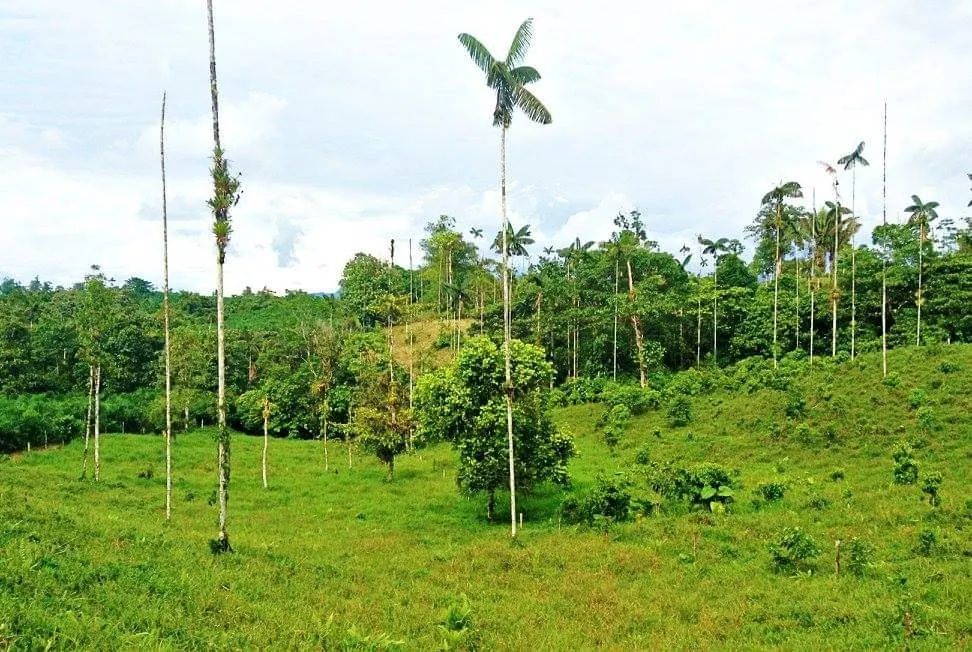
“You don’t have to be an expert. With determination and positivity anyone can do this,” says Kristen. “The most important thing is to embrace the fact that we are part of nature and we must work with nature.”
Kristen is optimistic about our chances of turning around the crises in climate and nature, even though she recognizes the urgency to make radical changes.
“There should be no dichotomy between man and nature. Nature is not a theme park,” she says. “We are clever and when we use our intelligence in gentle, thoughtful, careful, watchful intervention we can create truly sustainable systems that get ever more fertile and productive year on year.”
Living in harmony with nature again doesn’t have to mean going backward in time. The best systems stem from design, creation, and innovation and if we use our incredible knowledge and skills to generate balance we can rapidly rebuild the ecosystems that have been so viciously plundered in recent times.
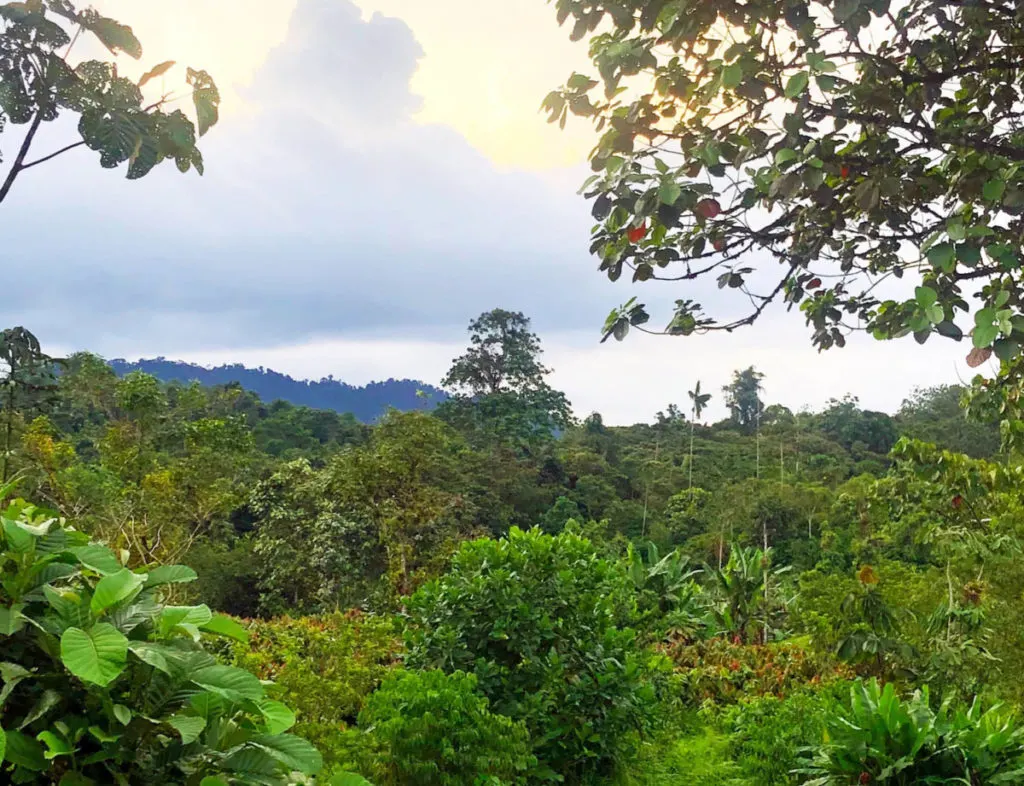
Kristen lives in the Chocó Andino rainforest of North-West Ecuador. The Chocó Andino Forest is known as a Cloud Forest because of its higher altitude. It has a very specific climate which supports a huge profusion of life.
This tiny biosphere is arguably the most bio-diverse on the planet; home to 35% of the world’s species with around 10,000 species of plants, 270 mammals, 210 reptiles, 200 birds, and 130 amphibians.
As with many other areas of South American rainforest, the Chocó Andino rainforest has been ravaged by slash and burn agriculture and timber extraction. If we continue at the current rate of deforestation (which is one football pitch-sized area of forest lost every second) all the rainforests will be gone within 100 years.
The rainforests are essential to our planet’s water cycle, support unparalleled biodiversity, and pull significant amounts of carbon from the atmosphere to help cool our planet.
Today only 2% of the original Chocó Andino rainforest remains and this is why the regenerative work of people such as Kristen and Juan is so vital.
Kristen and Juan’s land was deforested back in the 60s and used as cattle pasture. Kristen is also keen to point out that grazing is completely inappropriate in tropical and sub-tropical regions.
“The neotropical forests of South America, Central America, the Caribbean islands, and southern North America are too warm for cattle and the rainfall is regularly so torrential that it will sweep away all topsoil, organic matter, and nutrients without the protection of a forest canopy,” comments Kristen.
The life of this land is dependent on the forest canopy and also ground cover plants such as mosses and ferns which store the nutrients. Around 80% of plant life is epiphytes (plants that grow on other plants, not in the ground). Nutrients are taken from decomposing matter on the ground up into the plants via microorganisms extremely quickly.
The soil that is exposed after deforestation is low in nutrients and fragile. Whatever does not get washed away is used to grow grass for cattle grazing. “The cows I see do not look happy. They are malnourished and ill-suited to the hot and humid environment. It is a lose-lose situation; a short-term money grab,” says Kristen.
But this scenario can be reversed.
Agroforestry is the solution and projects such as Kristen and Juan’s show the way. Their land now produces a varied abundance of food and is teeming with plant and animal life.
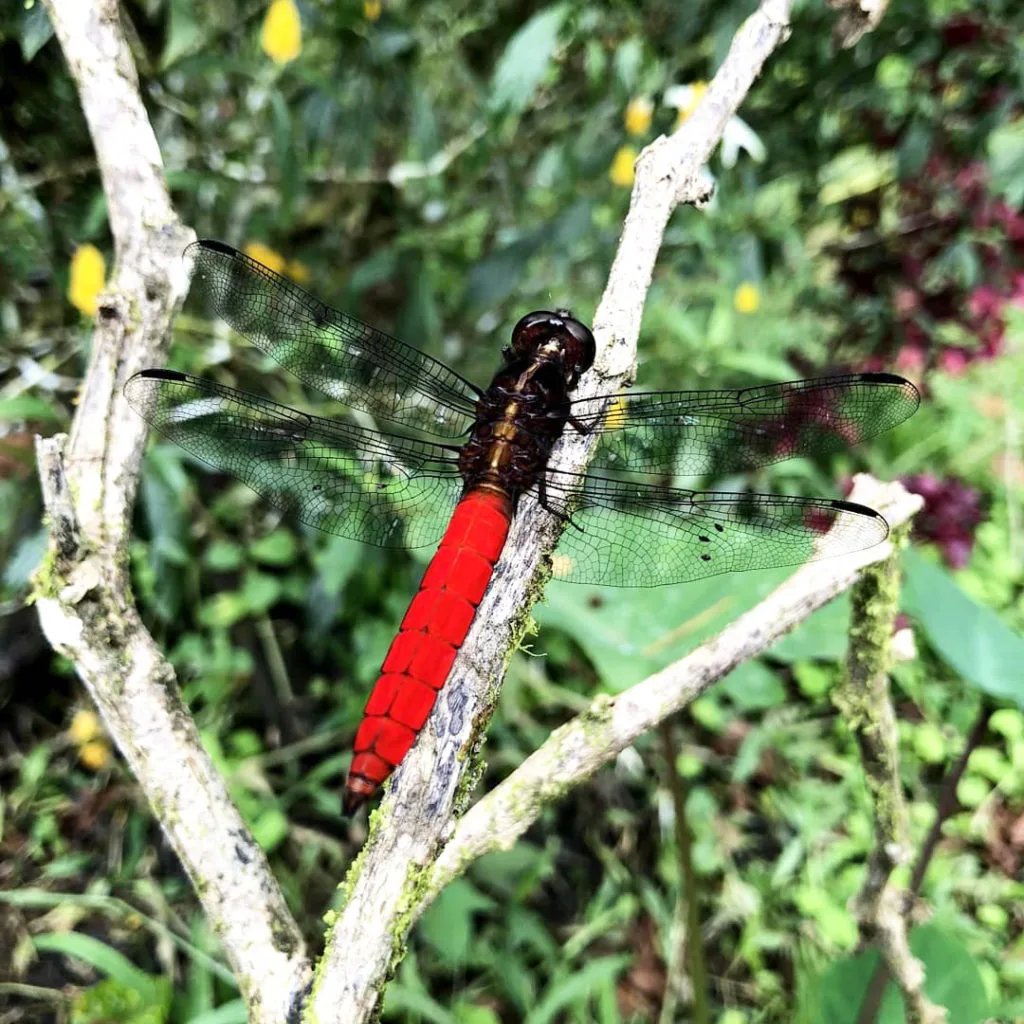
The food crops they grow include bananas, papaya, coconut, mango, plantain, balsa, yucca, cacao, cardamom, mangosteen, turmeric, ginger, citrus fruits, and avocados. They also grow trees with timber in mind, such as teak, laurel, and guaycán.
From a distance, they can now see the moisture hanging over the trees as it reverts back into a true cloud forest. Carbon is not captured in dry soil. Carbon sequestration is most efficient in areas of elevated humidity.
“We are planting systems that kick-start and mimic the natural systems,” says Kristen. “We must face up to and understand what is happening and take action now.”
Agroforestry is about creating a healthy, robust cycle that happily spins in its own circle. It is subtly designed, but once off and running, human intervention is minimal.
“I see it like jump-starting a car,” comments Kristen. “Nature will drive itself but we have to hook the cables up again.”
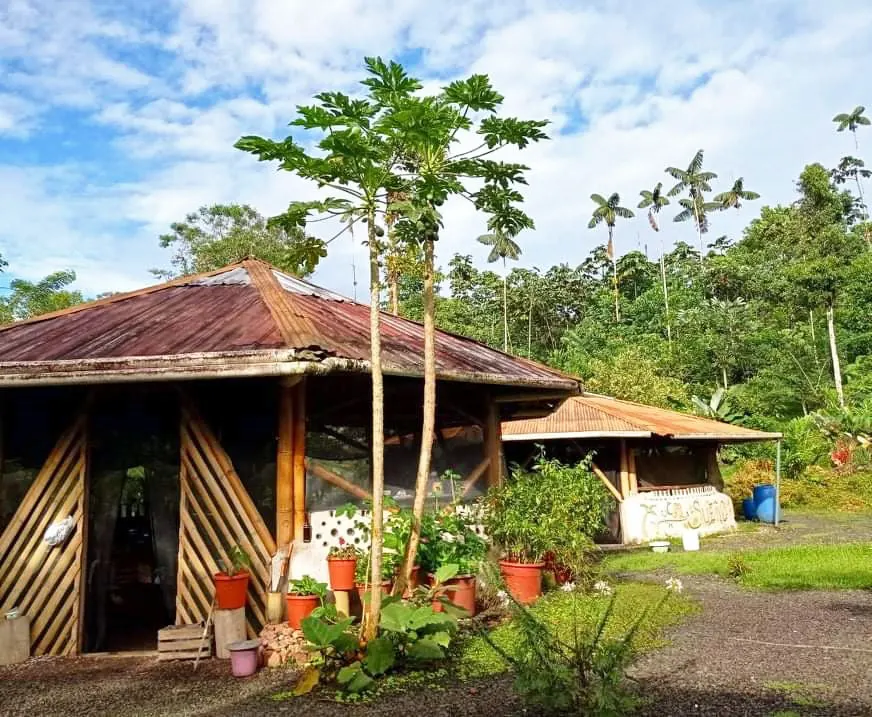
The neotropics are the home of agroforestry and permaculture.
The indigenous people of the Amazon rainforest basin worked out long ago how to cultivate tree crops and have been specifically growing the likes of cacao, babaco, and papaya through deliberate and sophisticated agroforestry systems. They also devised how to harness nutrients in the soil using charcoal.
Kristen points to the Land Equivalent Ratio which illustrates that significantly higher yields can be produced from polycultures. Monoculture-style farming requires much more land to produce the same yields as diverse, inter-cropped polyculture farming.
“It might take you 3, 5, or 8 years but increased and sustainable harvests will come with polyculture systems,” says Kristen. “At the moment we are caught in a trap of thinking we need so much wheat, corn, rice and soy. We need to release ourselves from this dependence on grain crops. Tree crops such as Brazil nuts, chestnuts, and hickory provide more protein and essential fats than grains, plus they are perennial producers whereas grain needs to be planted every year.”
Farmers around the world are suffering from the effects of monoculture farming with a lack of soil fertility and crop losses. Many are exploring new ways of producing food.
“We should be planting trees everywhere we can and gearing the way we live around them,” argues Kristen. “The developed world is deforesting the developing world and should be planting lots more of its own trees to compensate for this.”
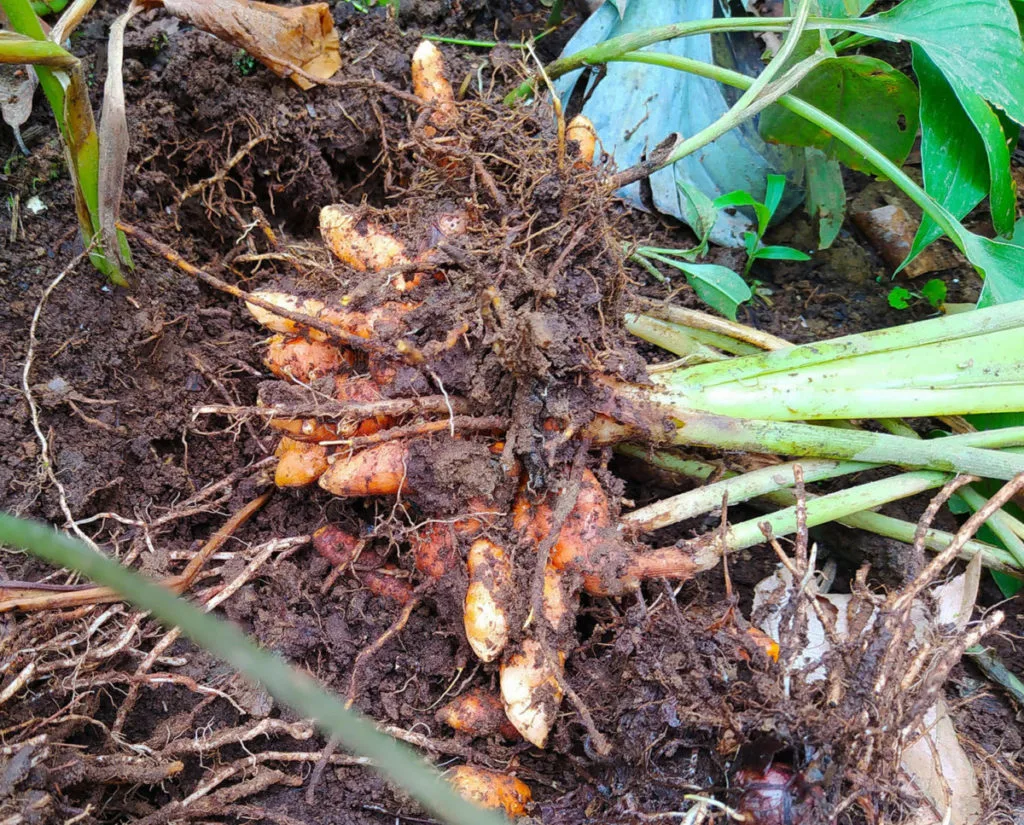
Another fundamental aspect of polyculture farming is that the farmers actually have something to eat themselves. A farmer growing a field of wheat might get paid but he will have to go to the supermarket to get his food.
Kristen has various key crops that she sells, predominantly cacao, but can also wander the forest every day collecting food for her table.
“Not lettuce though!” she explains. “Or broccoli, cauliflower, potatoes… People tend to think that in the tropics we can grow anything we like. We can grow mangoes, coconuts, and bananas, but there are lots of wonderful crops I would love to grow but can’t because it’s too warm and humid.”
Permaculture is all about working with nature and nature is specific to each region. There is 85-90% humidity in Kristen’s forest most of the year and she has designed her growing around appropriate climate-specific crops.
Kristen points out, “I see some people growing temperate climate crops in the tropics with all sorts of special nurseries and such. I think it’s more important to adapt. We grow taro and sweet potatoes, which work as well as potatoes, and tropical greens like Malabar spinach. Why impose your preferences when it’s so much easier to grow and eat what thrives naturally?”
To anyone considering starting a large-scale permaculture project, wherever you may be in the world, the first thing to do is assess your land. “How does that particular land thrive naturally? What is already growing well there? Not every piece of land is destined to be a forest,” comments Kristen.
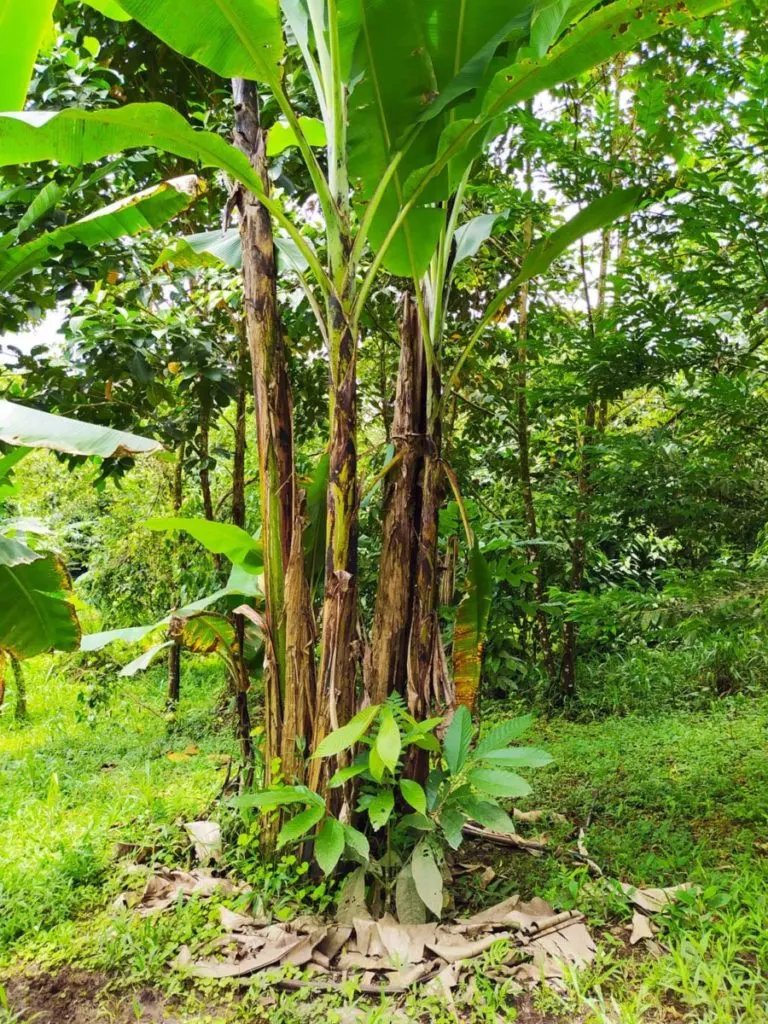
If agroforestry is the plan, you will need to decide on the most appropriate pioneer plants. Pioneer plants are fast-growing and serve to soften up the soil with their strong roots and the rotting organic matter of their leaf fall.
There are many useful and/or fruiting plants that can be planted as pioneers in Ecuador. The best ones provide lots of shade and biomass and have wide-spreading, deep roots to aerate the soil.
Kristen grows bananas, plantain, balsa, and yucca as her pioneers.
These can be established in as little as a year. As well as providing food, they retain moisture to facilitate carbon capture. The carbon metabolizes the nitrogen sitting on the soil when the plants are cut for biomass into digestible food for the microbes and, voila, the land springs back to life!
In the protective shade of the pioneers, seeds for your chosen target plants can germinate and grow. Target plants are slower growing, but these tend to be the ones that bring in an income or regular food supply.
It is a good idea to have multiple target phases.
Kristen focuses on cacao which takes around 4 years to develop, inter-planted with other high-value crops such as teak, cardamom, mangosteen, and turmeric.
“Once you have designed your forest around your appropriate pioneer and target plants you can get stuck into growing your beautifully bio-diverse polyculture,” encourages Kristen. “Humans are very good at agroforestry and all the information and advice we need is out there. We must recognize the urgent need to be planting more trees and living with nature and get on and do this!”
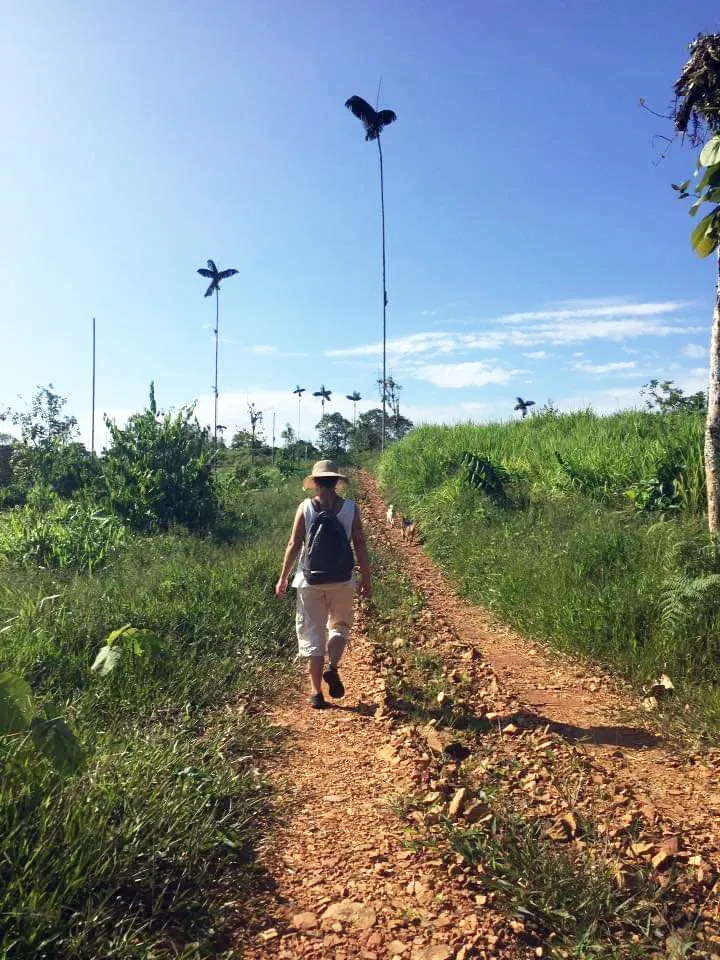
Check out Kristen’s website and Youtube channel.
If you are interested in learning more about home-scale food forestry, Kristen runs an online Food Forest At Home course.
There is also information on her website about available land for sale adjacent to her farm in Ecuador with the option to have her manage it for you. Juan is a skilled builder with both wood carpentry and bamboo and can build ecologically sound structures for you as well.
For more about the need to plant more trees wherever you are, read our article here. And for more interesting homesteading reading, check out this interview with Robert Guyton and his forest garden.

Get the famous Rural Sprout newsletter delivered to your inbox.
Including Sunday musings from our editor, Tracey, as well as “What’s Up Wednesday” our roundup of what’s in season and new article updates and alerts.
